SUMMARY
This is AI generated summarization, which may have errors. For context, always refer to the full article.
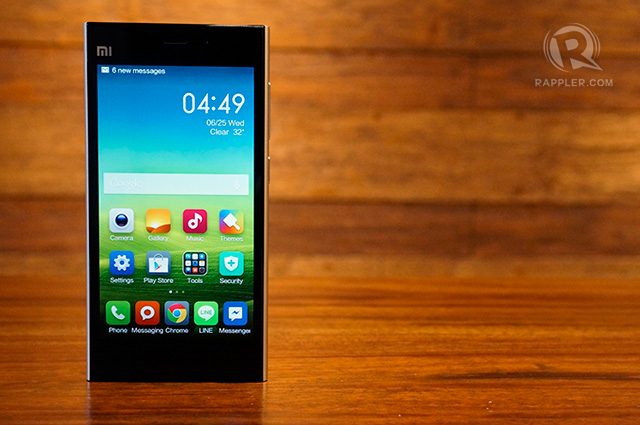
MANILA, Philippines – A small box waits at my desk, a new smartphone to be reviewed. Tomorrow the smartphone I’ve called my own for the last two weeks goes back into its box and is returned to its manufacturer like a dozen other phones this year. The end of a review cycle is always bittersweet, but for some reason I’m particularly sad to see this one go.
The obscure Mi 3 smartphone is the pride and joy of Chinese electronics company Xiaomi. For the most part unkown to anyone outside of China and Southeast Asia, it’s a phone that deserves more attention than it currently gets.
The company too, one of the fastest growing smartphone manufacturers in the world, is one to watch out for. In just 4 years, Xiaomi has built a sub-US$250 phone with impeccable design, specs and performance that rival the best smartphones the world has to offer, and with one of the most refreshing implementations of Android to date.
Premium plastic
The expectations are obviously lower for a China phone priced as a mid-range product but there’s no nitpicking the Mi 3. While not a work of art like the HTC One (M8) and the iPhone, this China phone punches above its price point.
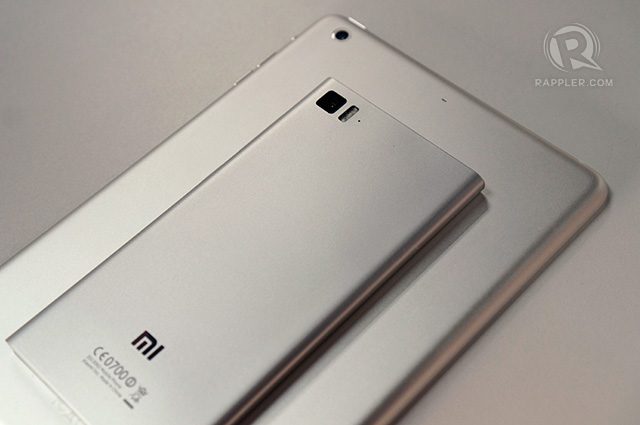
While the phone’s non-removable black plate is made of plastic, it’s given an aluminum finish reminiscent of the iPad. Unseen is a chassis made of an aluminum-magnesium alloy that gives it enough heft, and as a result, a more premium feel. In contrast, Google’s plastic Nexus 5 feels light, cheap and well…plastic.
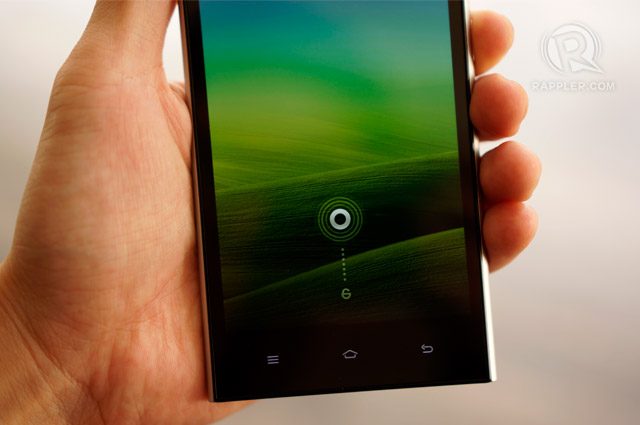

The phone’s rounded sides are good enough for a comfortable grip although I’d rather its corners were less sharp and boxy. Its top and bottom are contradictions, the bottom features laser cut grilles, while its top has a poorly constructed, flimsy and easily bent out-of-shape SIM tray that is the only sore spot on the phone’s otherwise impeccable design.
The 5-inch smartphone sports a gorgeous Full HD display with just the right amount of punch and contrast and deep blacks. Unlike the Galaxy S5 for example – you’re not getting a massively saturated display by default, and you can dive in and change the presets if you’re not satisfied. For most users this isn’t necessary – viewing angles are great, although the phone struggles in bright sunlight.
If iOS were Android

MiUi, Xiaomi’s take on Android has had Googler heads turning for quite some time. In its purest form, Android 4.4 KitKat is breezy, but often, smartphone companies build so much junk on top of it, leaving you with clunky user interfaces encumbered by unnecessary features that are novel more than functional.
MiUi v5 is simple and elegant – almost reminiscent of iOS. Nothing about the UI is flashy; in fact it’s this restrained interface that draws the user in. App icons are consistently rounded squares, transitions are buttery smooth, and menu systems are simple.
Any excess is cut off – gone is the app drawer, an Android mainstay. Installed apps instead appear directly on the home screen and can be placed into folders. The Mi 3’s home screen is like iOS but with widgets.
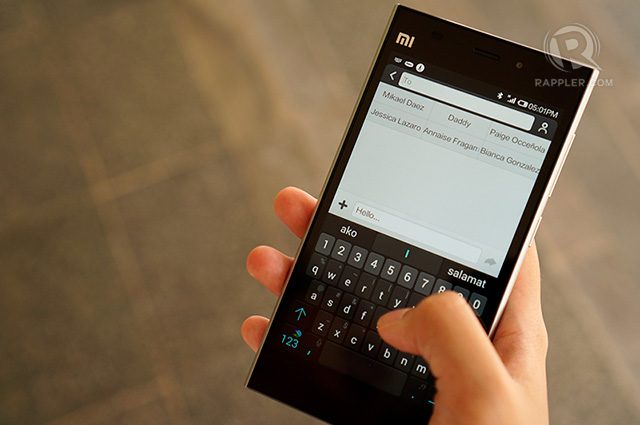
There are a lot of small features tucked away into everyday apps and settings that make practical sense. Like being able to select different volume levels for ringtones, your alarm clock and music; having your phone vibrate when the party you are calling has picked up (so you don’t have to hold it up to your ear right away); navigating your phone’s file system by file type; and a suggested list of contacts based on recents when composing a new text message.

The younger crowd will love how the user interface is customizable with themes. A standalone themes app lets users download and apply a whole range of theme packs that range from the sublime to whimsical. The Lamborghini theme pack, for example, has a speedometer that doubles as a clock, flashing headlights, and the sounds of a revved up engine when unlocked.
The Security App is one of the phone’s other hidden gems. Aside from built-in cache cleaning powered by Clean Master and Tencent’s Virus Scan, the Permissions app is a powerful tool that lets you manage app permissions by type or by app.
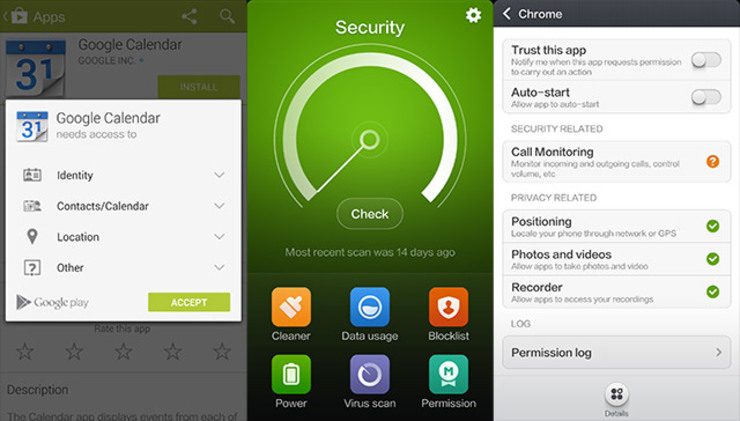
By default when you install a new app you give it blanket authority to access whatever permissions it asks for – you don’t have a choice really, accept or abandon installation. The Permissions app allows you to go back after an app has been installed, drill down into individual permissions, and allow or deny permissions or choose to get prompted each time say an app asks to access your address book.
Sharp shooter
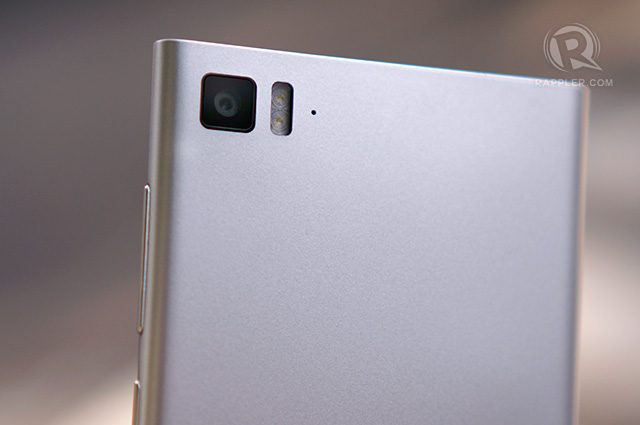
The Mi 3 has a 13 megapixel main camera with an imaging sensor from Sony. Images, particularly those shot outdoors, were great, outperforming even the iPhone 5 in an informal test. HDR mode dramatically improves low light photos but you’ll need a steady hand to avoid image blur. Don’t expect top notch images from the Mi3 but overall they should be good enough to satisfy even those whose primary consideration is camera performance.
The camera app is pretty basic, very much like stock Android. There aren’t a host of shooting modes – just HDR, Panorama, 5 built-in filters that offer live previews, and a gimmicky Skin Tones feature that detects the age and gender of the subject and applies a different amount of skin softening based on those factors.
4:3 images max out at 13MP, while videos max out at 1080p.

More pro-users will want to switch to advanced shooting mode. When turned on, users can manually set White Balance, Exposure, and ISO and switch between AF, MF and Macro shooting modes.
Fastest smartphone
Because it’s been in the market since August of 2013, the Mi 3 doesn’t have killer specs like the Galaxy S5 or the HTC One (M8). Both phones run newer quad-core Snapdragon 801 processors vs the slightly older Snapdragon 800 on the Mi 3. But its year-old hardware is still outperforming its competitors. Our own tests on benchmarking app Antutu places the Mi 3 in an elite group of phones that score above 35000.
Real world performance is consistent with benchmarking tests. The phone took pretty much everything we threw at it also. With multiple apps running in the background we got through resource intensive games without so much of a hiccup. But it wasn’t all smooth sailing, there was the occasional UI bug, apps insisting that GPS wasn’t turned on when location services were enabled, and the occasional app crashing as if it were running a beta OS. A shutdown and restart resolved most of my problems.
The Mi 3 is powered by a 3050mAh battery, not the biggest battery on a smartphone today, but enough juice to give me 9-10 hours with regular use with WiFi, Bluetooth and GPS turned on.
Made for developing countries
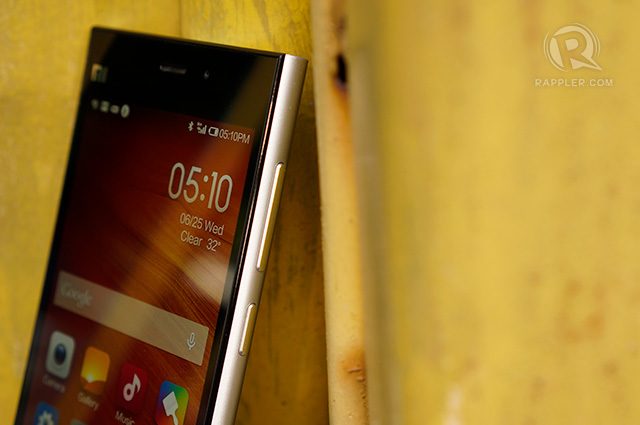
To afford its aggressive pricing, Xiaomi is known to spend very little on marketing, relying instead on cultivating its almost cultish fan base. But selling for a third of the price of its supercharged rivals means the phone doesn’t have headline features like water resistance or fingerprint scanners.
While it does have NFC built-in, a clear omission is the absence of support for LTE networks. Not that big of a deal if you’re in the Philippines but definitely a factor if you lived in Europe, the US or Korea – markets not in Xiaomi’s 2014 expansion plans. Probably an even bigger miss is the absence of a memory card slot for expandable memory. Then again Apple also sells 16GB iPhones with no expansion options.
The phone’s full sized SIM card reminds us that this is a product intended for emerging markets, a fact that’s so easy to overlook because of how the phone looks, feels, and performs.
How big a deal its price tag is, is also easily overlooked, but just imagine the disruption it would cause if the world realized you could get a phone this good for this little.
Xiaomi’s new Global Vice President, former Google VP Hugo Barra says of an American-invasion, “I think we have got to work ourselves up to that. We’re not quite ready for that market yet. We’ve got to be humble and it’s a bit too much to take on so we’ll get there at the right time.”
But while its current ambitions are humble, there’s no denying that success on a more global level is on the agenda. If for anything else the Mi 3 is a foretaste of what’s yet to come, it also is here and now, a phone worth owning. That is, if you can get one. – Rappler.com
ALSO READ:
- Mi3 gets sub-P11K pricing for June 26 PH flash sale
- Mi3 Unboxing: High-end Android smartphone for less
- Mi3 review on TechRap
WATCH:
Add a comment
How does this make you feel?
There are no comments yet. Add your comment to start the conversation.